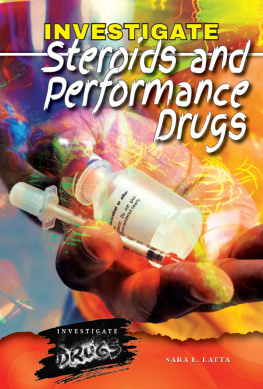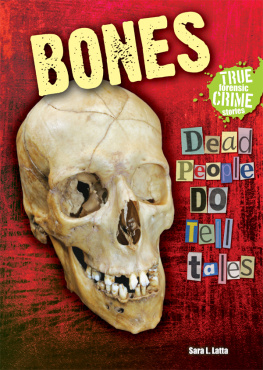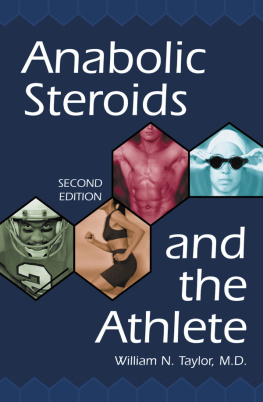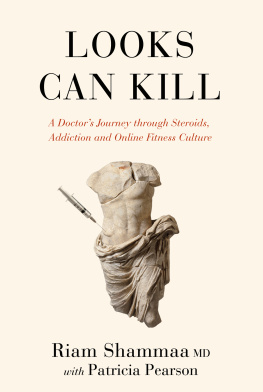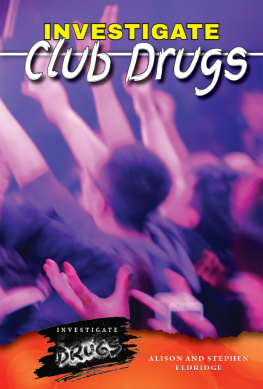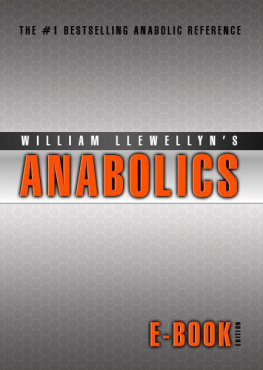INVESTIGATE Steroids and Performance Drugs
Steroids and performance drugs are abused by all types of athletes, from professional cyclists to high school linebackers. What are the physical and mental effects of these drugs? How do you resist peer pressure and help friends stay drug free? Real-life case histories bring these books to life.

Taylor Hooton might have followed his cousin Burt Hooton, a pitcher who once threw a no-hitter for the Chicago Cubs, into the majors. He had a good arm, and as a junior at West Plano High School in Texas, he had a shot at making the varsity baseball team the next season. He was also popular and good-looking. Like many teens, his looks were very important to him. At 6 feet 2 inches and about 175 pounds, he was lean and strong, but he didnt have the muscular build he wanted. In the fall of his junior year, one of his coaches told him that he needed to get bigger if he wanted to pitch varsity. That sealed the deal, as far as Taylor was concerned. He knew that he could get bigger by spending more time in the weight room and changing his eating habits, but it would take hard work and time. He knew a lot of other kids at school who had used steroids, and theyd gained a lot of muscle, fast. It was no secret that some guys in the major leagues juiced, and they had the home run records to show for it. As far as he could tell, there were no side effectsas long as he didnt get caught.
In February, Taylor began buying steroids with money hed stolen from his mothersomething hed never done before. In a matter of weeks, he was considerably bigger and stronger. However, he also developed a severe case of acne on his back (a common side effect of steroid use). Worse, he became increasingly angry and irritable. His girlfriend, Emily, recalled violent mood swings; little things would cause him to fly off the handle, punching walls and doors until his hands bled. In an interview with CBS News, his mother said that [he] went from a calm person, like were talking now, to these rages, yelling and screaming, and hittin on the table, and stompin out of the room. Totally un-Taylor like. Later, he would apologize for his outbursts, but they happened again and again.
Taylors parents began to suspect that their son was using steroids. They sent him to a psychiatrist, who found that he was suffering from major depression. She suspected that the anabolic steroids he admitted using were at least partly to blame. She told Taylor to quit taking the steroids and put him on a drug to help him with his depression. He quit the steroids, but his depression just got worse (a common reaction to withdrawal from the drugs). That summer, following a family vacation, his parents discovered that he had stolen a digital camera and laptop computerprobably so that he could sell them to buy more steroids. The next day, he used two belts to make a noose and hanged himself in his bedroom.

Image Credit: Nancy Brammer/iStock
Athletes, even those in high school, sometimes feel the pressure to take drugs to get bigger and stronger.
Later, Taylors father discovered vials of steroids, needles, and syringes in his room. Doctors examining Taylors body found that he had begun using steroids again. Taylors parents and doctors are certain that his suicide was a direct result of his steroid use. Hes gone. And its devastating, Taylors father told CBS News. Well never get over it.
Taylor Hootons story may be an extreme one, but its a sobering example of just how dangerous steroids and other performance-enhancing drugs can be. Despite the risks, more and more teens who want to gain an edge on the playing field, battle fatigue, or simply look better are experimenting with these substances. Some performance-enhancing drugs can even hide the use of other illegal substances. A study from the University of Minnesota found that among middle school and high school teens in the Minneapolis-St. Paul area, nearly 6 percent of boys and 4.6 percent of girls reported using anabolic steroids.
It can be difficult to stay clean when it seems that so many people are using performance-enhancing drugs, but you should keep a couple of things in mind. First, its cheating. Cheating is the same as a lie, and cheaters often get caught. Look at cyclist Lance Armstrong, who was stripped of his Tour de France titles and is now banned from all professional sports. Second, these drugs cause serious physical and mental disorders, even death. Many performance-enhancing drugs are especially dangerous for teens, whose bodies and brains are still developing.
Drugs like anabolic steroids that increase muscle mass and strength are among the most commonly abused performance-enhancing drugs. But you could fill whole medicine cabinets with other kinds of performance-enhancing drugs. Here is a quick overview of these drugs; well take a closer look in the chapters to follow.
Anabolic androgenic steroidsthats a real mouthful. No wonder most people just called them steroids, even though there are many different kinds of these compounds. These particular drugs are anabolic because they build muscle. They are androgenic because they are associated with male characteristics, such as deep voice or increased hair growth. And they are steroids because they are a type of hormone. Anabolic androgenic steroids (AAS) are essentially artificially produced versions of testosterone, the male sex hormone. There are some legitimate medical reasons for using AAS. Doctors may prescribe them under close supervision for people who dont produce enough testosterone on their own, or have certain blood disorders or types of cancer. But doctors cannot legally prescribe anabolic steroids for the sole purpose of building muscles, as they can be harmful in otherwise healthy people. They are currently banned by most sports organizations, including the International Olympic Committee, the National Football League, the National Basketball Association, the National Collegiate Athletic Association, the National Hockey League, and Major League Baseball.
Some supplements contain anabolic steroid precursors, or prohormones. These are substances that the body can convert into steroids. Like AAS, most are illegal without a doctors prescription.
Other substances that athletes sometimes take to boost their muscle growth include human growth hormone (hGH), human chorionic gonadotropin (hCG), luteinizing hormone (LH), and insulin-like growth factors. These drugs are only approved for athletes who have illnesses or conditions that are treated by the drugs.
Some athletes, like those who need a lot of endurancecyclists and long-distance runners, for exampledont need bigger or stronger muscles. They need to be able to increase their bodys ability to deliver oxygen to the muscles over long periods of time. Athletes can condition their bodies to hold and deliver greater amounts of oxygen through proper training. Oxygen is carried through the blood by red blood cells, so some athletes try to get the edge by increasing the amount of red blood cells in the body.
One approach is blood doping. An athlete removes some of his or her own blood (just as he or she would do when donating blood), stores it until the body has had time to replace it, and then injects it back in shortly before the race. Voilamore red blood cells! Others use a synthetic form of a hormone made by the body, erythropoietin (EPO). EPO stimulates the bone marrow to make more red blood cells. Blood doping and EPO are both illegal for use in athletic events. They are also dangerous.

